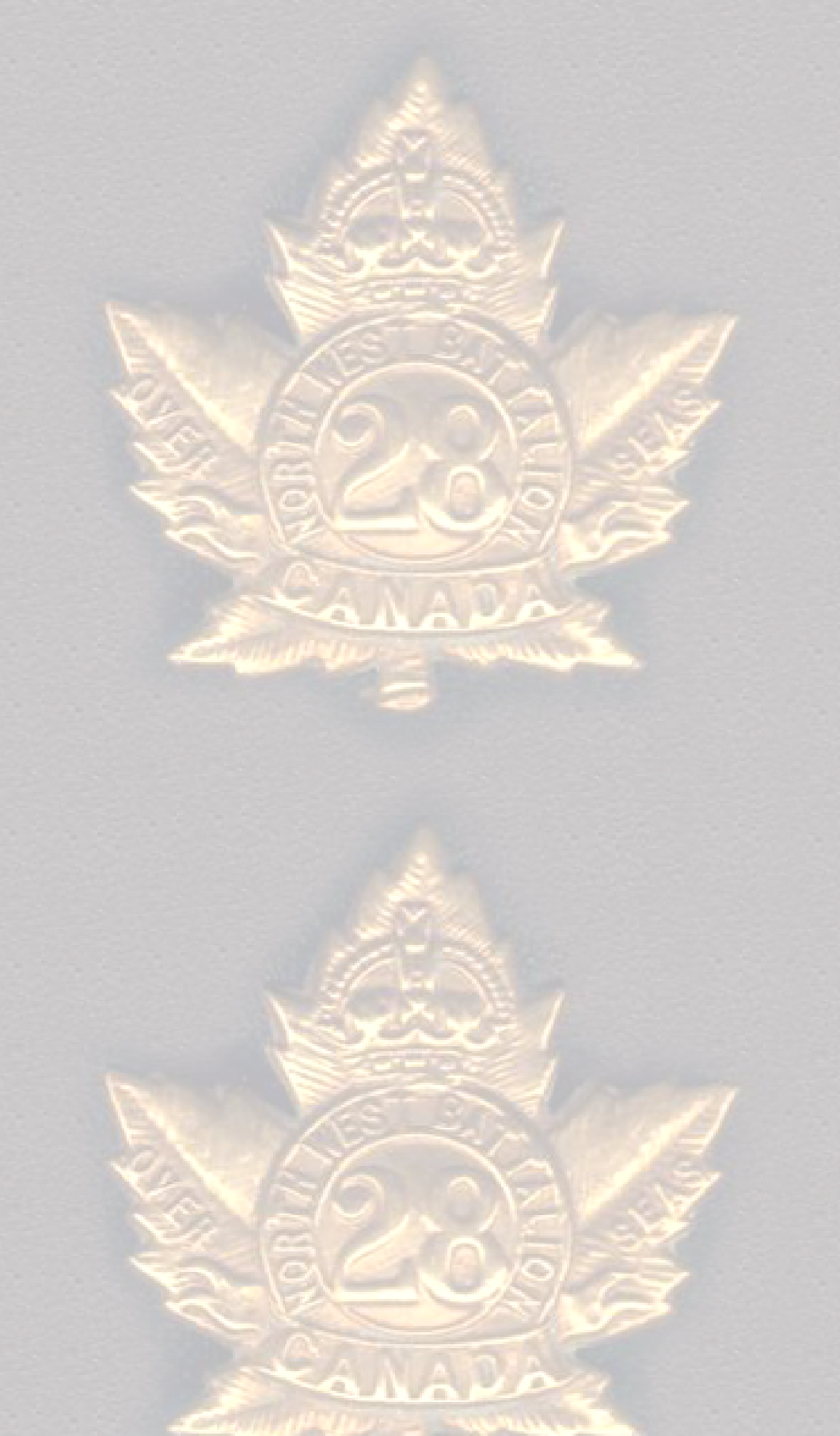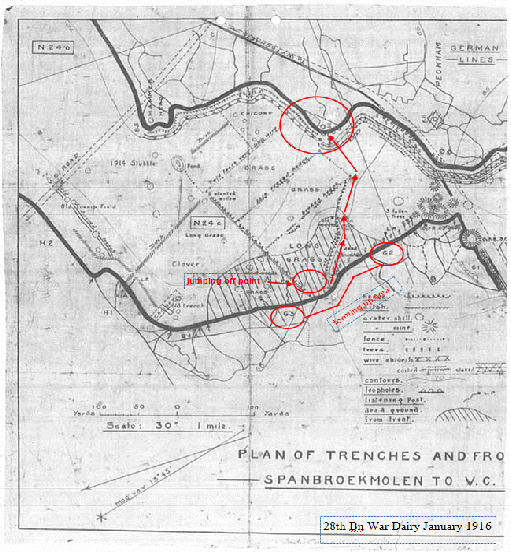
The War Diary of Lieutenant William L Hayes M C
1915—1919
1916 and the Battles for Ypres
Trench Raid at Peckham Corner Jan 1916

WLH: 26 Feb 16 Admitted to hospital, France, sick tfrd to/via 5 Can Field Ambulance
26 Feb Adm DRS (admitted, Divisional Rest Station) Godewaersvelde influenza
5 Mar 16 discharged to duty ex 5 Can Fld Amb.
6 Mar 16 returned to duty from hospital
28th Bn War Diary: 25 Feb ‘Sick parades rather heavy.’
Field Ambulance was not just a vehicle; it was a system under the direction of the Army Medical Corps. Each Brigade had three Field Ambulances, divided into three sections; each had 36 stretcher bearers and other medical personnel. All infantryman had a basic medical kit for self administered first aid but were not permitted to stop in battle or administer first aid to other wounded men. Severe injuries required a wait, sometimes a long one, for the stretcher bearers.
Each Battalion was responsible for clearing its own wounded from the battlefield and transferring them to the Regimental Aid Post (RAP) where the Field Ambulance system took over transferring wounded casualties to Advance Dressing Station (ADS) or Casualty Clearing Station (CCS), then by horse drawn evacuation vehicle, railway line or canal barge to hospital. Many vehicles were driven by women and hospitals were managed by many others. (See books under Reference tab.)
Initially field stretcher bearers were recruited from the Battalion Band, but as more and more were required and the band needed for morale purposes, they were drawn from the Battalion itself or from conscientious or religious objectors who, while not in any way lacking in courage, did not wish to take part in active combat. Although allied stretcher bearers were permitted to carry arms, most chose not to as it added to the load they carried. Eventually there were sixteen stretcher bearers per Battalion or four per company of 250 men. Two were assigned to each stretcher, but in bad field conditions, it could take up to six to manage. It took a considerable amount of time. No wonder then that any soldier capable of walking was expected to do so. Later on prisoners were drafted into this work and most did so willingly. Their war was over.
Stretcher bearers were given Red Cross badges to wear in an attempt to provide some protection. At times during a battle, both sides agreed a temporary cease fire to collect the wounded and dead. Until this occurred, stretcher bearers were as vulnerable as any other soldier. Evacuations eventually made their way into the supply trenches, where all manner of other goods, equipment and men were going in the opposite direction. It was a difficult job and they earned great respect.
Quite possibly, WLH reported to the RAP on his own having been sent by the daily sick parade. He was sent to Godewaersvelde Divisional Rest Station (DRS). Fortunately influenza in this case did not turn into pneumonia -
https://digital.library.upenn.edu/women/adami/camc/camc.html (War Story of the Canadian Army Medical Corps)
http://www.cmp-
Only about 40 men from the Battalion took part in this raid and they were well trained. Unless WLH was one of 31 battalion bombers supporting the raiding party, it is likely that he was not directly involved.
The raid was successful and a great deal of information was gathered.
It was this meticulous planning that would be of high significance in battles to come.
The Battalion had not moved since it arrived in September, still occupying the same trenches by January 1916.
Trench Raids had several objectives: to capture prisoners for interrogation and identification in order to determine which part of the German army was opposite; to capture arms and identify possibilities of gas; to establish the condition of the enemy trenches and their stores. They also were a means of establishing enemy morale. In addition the opportunity was taken to destroy enemy works and determine if mining was being carried on. The capture of craters or saps by this means allowed an army to extend its line incorporating the captured area into their own line. This raid on the 30/31 January was meticulously planned. There was a great deal of reconnaissance in advance, models created, timing and advance wire cutting planned, equipment allocated included everything from artillery, to cough sweets and black tape to prevent sounds that might alert the enemy. Trench G1 and craters on the map are the site of the October explosions.
There is a fine report with drawings in the 28th Bn War Diary. Map (below) page 24, Jan 1916